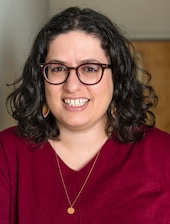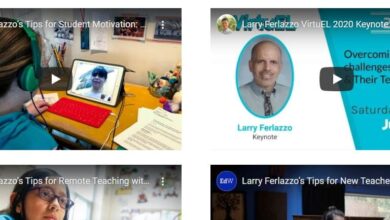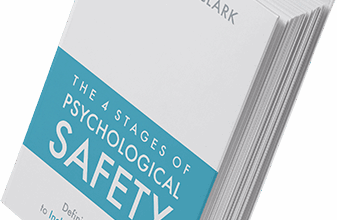How Can I Make Change When I’m Just One Teacher?

By Alex Shevrin Venet
 My first book, Equity-Centered Trauma-Informed Education, came out four years ago. Over those years, I’ve spoken to many readers who appreciated the vision I described of equitable schools that embrace students as full human beings.
My first book, Equity-Centered Trauma-Informed Education, came out four years ago. Over those years, I’ve spoken to many readers who appreciated the vision I described of equitable schools that embrace students as full human beings.
But as I visited book groups and schools, I kept hearing one question over and over again: “I want my school to be more equitable and to embrace trauma-informed practices. But I’m just one teacher. How am I supposed to make change in the face of so much resistance?”
The resistance is real. Pushback against equity-centered trauma-informed practices is present at all levels: from fellow teachers who don’t want to change “the way we’ve always done things,” to administrators and school boards that don’t see the need for policy change, to federal leaders who are actively targeting any efforts for equity and inclusion.
It’s overwhelming, and teachers feel disempowered. How can teachers become changemakers with so much stacked against them?
I heard this question so many times I eventually decided to write an entire book in response: Becoming an Everyday Changemaker: Healing and Justice at School. In writing the book, I researched the connections between school change and collective trauma to understand what makes change so hard.
Then, working from that understanding, I interviewed teacher changemakers and activists, and drew from my own experience, reading and research, to provide tools and guidance for caring teachers who know that our collective action can make schools more safe and inclusive places.
Here are three parts of my answer to the question, “how can I make change when I’m just one teacher?”
1. Don’t go it alone
Changemakers aren’t lone wolves or isolated superheroes. Change happens in networks, or as the organizational theorist Margaret Wheatley says, “it’s never a question of ‘critical mass.’ It’s always about ‘critical connections.’” Critical connections are the relationships we build that amplify our changemaking power. We can do so much more together than alone.
Our first step as a changemaker should be to identify the people we can collaborate with. This might look like finding even one person in your building who you think may have some similar values and ideas as you and making an effort to get to know them better.
The two of you might be able to compare notes about the inequities you notice in your school and ideas you have to change them. That might grow into a group of three who read a professional development book together to fuel their changemaking work, or four teachers all trying out a new strategy and comparing notes.


You don’t have to consider yourself a community organizer to start building these connections. Just find your people and see what you might accomplish together.
Another way to build community is to tap into groups already working on the change area you’re interested in, such as Teachers Unify to End Gun Violence or Black Lives Matter at School. These groups have specific action steps for educators to get involved, and you can tap into community resources and gatherings.
Being a changemaker doesn’t necessarily mean coming up with all the steps yourself; rather, you can plug into actions currently underway and build local energy toward a national cause.
Don’t forget that your students and their families are powerful collaborators. If you’re wondering what most urgently needs change in your school, your students and their families are often the people most impacted by injustice and may be eager to collaborate on solutions.
While children shouldn’t be responsible for fixing the messes of the adults, students can experience empowerment and agency when we support their skill development as changemakers alongside our own.
2. Identify your focus and your strengths
When you’re a social justice-oriented teacher, you can’t help but notice that injustices are woven into almost every part of the education system. It can be overwhelming to decide where to begin when so much needs to change.
Sometimes we can respond to that sense of overwhelm by thinking, “I’m going to attack ALL of the problems at once.” This enthusiasm is admirable but can lead to burnout when we stretch ourselves too thin and take on too much.
In Becoming an Everyday Changemaker, I quote Oregon teacher Ursula Wolfe-Rocca: “It can be overwhelming to witness/experience/take in all the injustices of the moment; the good news is that they’re all connected. So if your little corner of work involves pulling at one of the threads, you’re helping to unravel the whole damn cloth.” I return to these words often when the work of change seems too big and ask myself: “what’s the thread I need to pull on right now?”
To identify your own corner of the work, ask yourself:
- What are the injustices or inequities I see in my school?
- Which of these things am I most passionate about changing?
- What am I best poised to influence in my role or position?
Once you’ve identified what you want to focus on, you can think about how. We all have different strengths and can put these to use influencing change in so many different ways.
If you’re not a confident public speaker but you’re organized and tech-savvy, maybe your role won’t be to make the public comment at the school board meeting, but to help craft the emails and social media posts that drive teacher attendance to the meeting.
If you aren’t sure how to impact state education policy but you’re a people-person, maybe your role will be to network and figure out how to connect the experts and lawmakers to the teachers “on the ground.”
In my book, you can find a whole list of ways teachers might influence change and reflection questions for identifying how you might show up best for changemaking given your own strengths and skills.
3. Stay in it for the long haul by remembering to dream
Changemaking work can be challenging and thankless. It can be frustrating and disheartening when progress gets blocked or reversed by changing political environments or societal backlash. To be a changemaker, we need to generate sustainable habits that keep us going for the long haul, recognizing that big and complex systems won’t shift overnight.
Part of this sustainability is about care: how do we show up for ourselves and one another through hard times? What are the ways we tend to our own and one another’s wellbeing proactively? Do we check in with each other, make room for all of us to get our needs met? And how do we show up when we are having a hard time, individually and collectively?
If you’ve found your changemaking community, these questions are a great place to start thinking about how you’ll structure care and support into your ongoing work.
It’s essential to tend to our needs along the way, but also to keep hope alive for where we’re headed. In my book, I quote educator Jamila Dugan’s encouragement for teachers to “push ourselves to think beyond what can’t happen and to think instead of our duty as the holders of dreams.”
Another way to put this: rather than what you’re fighting against, what are you fighting for? When you dream about a school centered around equity and justice, what does it look like, sound like, and feel like? When your students describe their ideal learning environment, what do they see? What could be possible if we redesigned schools around an ethic of care?
This type of dreaming helps fuel our changemaking by inviting us into a mindset of creativity and possibility. Dreaming isn’t about ignoring our current constraints or the challenges we face day-to-day. Instead, it’s about fueling ourselves with hope so we can get to work making those dreams happen.
We can’t do it all, but we can get started
Nearly every time I have the opportunity to talk to a group of teachers, I end with the same phrase: “we can’t do it all, but we can get started.”
Educational change is big and daunting. Individually, we can’t put it all on our own shoulders, and we shouldn’t have to. Teachers deserve an entire community of people supporting education justice and equity. At the same time, there is always something we can do to push toward that dream a little more than we already are.
Maybe it’s a small change in our classrooms. Maybe it’s attending one meeting, or making a donation, or sending an email to a potential collaborator. It doesn’t have to be big or flashy. It just needs to be a place to start. That’s how we show up for change every day: one small move at a time. Where will you get started?

 Alex Shevrin Venet is an educator, professional development facilitator, and writer. She is a teacher educator at the graduate level. Her teaching experience includes roles as a teacher/leader at an alternative therapeutic middle and high school, a community college instructor, and an elementary after-school teacher.
Alex Shevrin Venet is an educator, professional development facilitator, and writer. She is a teacher educator at the graduate level. Her teaching experience includes roles as a teacher/leader at an alternative therapeutic middle and high school, a community college instructor, and an elementary after-school teacher.
A resident of Winooski, Vermont, Alex is the author of Equity-Centered Trauma-Informed Education (2021) and Becoming an Everyday Changemaker: Justice and Healing at School (2024). (Read a review.)
Visit her website here and read her 2021 MiddleWeb article “Trauma and Teaching: Boundaries and Bridges” here.





